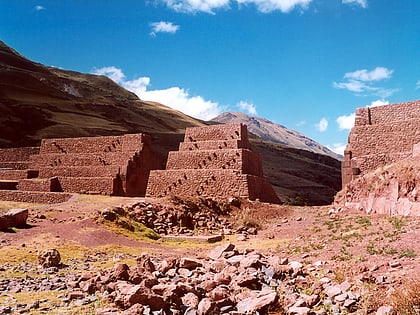Pikillaqta


Facts and practical information
Pikillaqta, a pre-Incan archaeological wonder, stands as a testament to the advanced urban planning and architectural prowess of the Wari culture in Peru. This sprawling ancient city, nestled in the southern Sierra region, dates back to the period between 600 and 1100 AD. It is one of the most significant and well-preserved sites from the Wari civilization, offering a unique glimpse into the lives of a society that once flourished long before the rise of the Inca Empire.
The site, which covers an area of nearly two square kilometers, showcases the Wari's sophisticated design with its orthogonal layout, consisting of wide streets, plazas, and over 700 structures, including residential buildings, administrative centers, and temples. The buildings, constructed with meticulous precision, are characterized by their high walls made of stone and adobe, which have withstood the test of time.
Pikillaqta, meaning "Flea Town" in the local Quechua language, was once a bustling urban center. It is believed to have served not only as a hub of administration and control but also as a place of ceremonial significance. The site's strategic location near the Lucre Basin and its proximity to other cultural sites in the region underscore its importance in the Wari's extensive network of cities and trade routes.
Pikillaqta – popular in the area (distance from the attraction)
Nearby attractions include: Rumicolca, Qusqu Qhawarina, Huaypun, Tauja.
Frequently Asked Questions (FAQ)
When is Pikillaqta open?
- Monday 24h
- Tuesday 24h
- Wednesday 24h
- Thursday 24h
- Friday 24h
- Saturday 24h
- Sunday 24h






